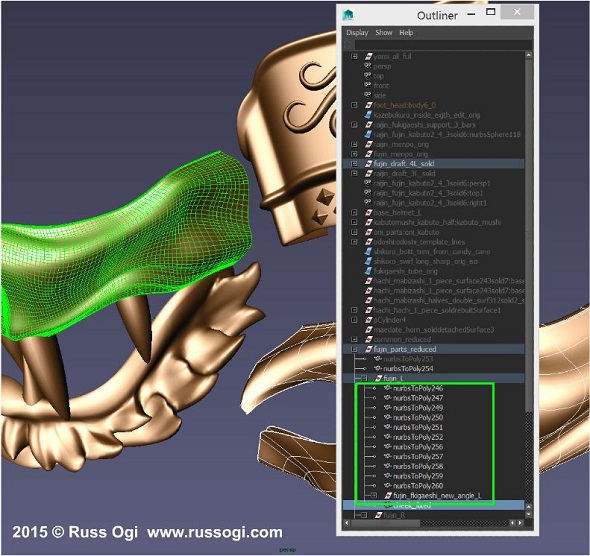

It is best to decide how you will be 3D printing and research the specifications for that 3D printing technology or service. Many of the specific details such as, ‘how thick do I need to make my walls’ and ‘what is the minimum feature size that I can make,’ are dependent on the type of 3D printer you will be using. (1) Original object at full size (2) Scaled down object with a proportionate wall thickness This may be too thin for the mass of the model or the 3D printer technology that you will be using. For example, if you make a model with a wall thickness of 1/8” and then scale that model to a quarter of the size, your wall thickness is now 1/32”. Wall thickness decreases in proportion to the size of the model.

Why does the final size affect the wall thickness? If you have a section of your model with a lot of mass, you don’t want it to be supported by only a thin piece of material. Wall thickness will also depend on how much mass that wall must support. Why not build a solid model to begin with?īy building a surface model first, I am able to resize the model and still make adjustments to the wall thickness according to the 3D printing technology that I will be using and appropriate to the final physical dimensions.

I proceed in giving the surfaces a wall thickness. Once I have the model at the correct measurements. (1) X-ray view of a solid model (2) X-ray view of a surface model (3) Shaded view of a solid model (4) Shaded view of a surface model If I haven’t already built the model at the final intended size, or if I need a smaller or larger version of the model, the first thing I usually do is scale the virtual sculpt to the final size it would be in the physical world (for example, 4″ wide x 4″ high x 5″ deep). Wall thickness is one of the main criteria for a 3D model to exist in the real world. In my last posting, the model I built was a surface model and therefore had no wall thickness. Giving your Maya 3D model a wall thickness Instead, I’m going to focus on my workflow in turning my models into watertight virtual objects. They also have some great information regarding file format, wall thickness and other surface issues to ensure your model is optimized and watertight. You can read their entry regarding polygon resolution and file size here. In light of that, I’m not going to cover those details in this post. I.materialise has some great information on their blog.


 0 kommentar(er)
0 kommentar(er)
